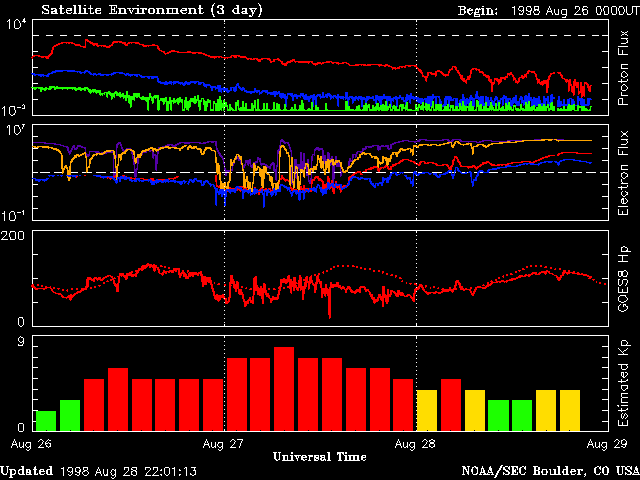 HAS THE SUN LOST
ITS POLES, BECOME UNSTABLE? HAS THE SUN LOST
ITS POLES, BECOME UNSTABLE?
SOLAR MAGNETIC FIELD STRENGTH: Many models of the solar
magnetic field used prior to Ulysses assumed that the solar magnetic field
was similar to that of a dipole; field lines near the solar equator were
thought to form closed loops whereas field lines from the poles were dragged
far into interplanetary space by the solar wind. For a dipole, the field
strength over the poles is twice that at the equator. Ulysses found that
the amount of outward magnetic flux in the solar wind did not vary greatly
with latitude, indicating the importance of pressure forces near the sun
for evenly distributing magnetic flux. (MAG experiment, A. Balogh, Imperial
College; E. Smith, Jet Propulsion Laboratory).
 HOW'S THE HYDROGEN? Note from
reader: HOW'S THE HYDROGEN? Note from
reader:
One day the host, a Rev. Webber, had a group of scientists,
I believe astrophysicists, discussing the then current state of our sun.
The scientists stated that our sun was rapidly consuming its hydrogren and
when most of the hydrogren was depleted it would most likely go
nova.
more
 HAVE WE
REALLY FIGURED OUT WHAT THE SUN IS? HAVE WE
REALLY FIGURED OUT WHAT THE SUN IS?
One of the biggest embarrassments of 20th-century science -- the sun's
refusal to emit nearly as many neutrinos as physicists say it should -- inched
closer to a possible solution last week when experimenters reported strong
new evidence that these weird elementary particles, long thought to be perfectly
mass-less, may have a small amount of heft after all. If neutrinos indeed
have mass, the story goes, they can change "flavor" on their flight from
the center of the Sun, eluding the electronic snares earthlings have been
setting. The neutrinos wouldn't be missing, but traveling in disguise.
continue |
![]()

![]()

![]()

![]()
![]() Magnetic Storm Occurring
08/06/98
Magnetic Storm Occurring
08/06/98
![]()